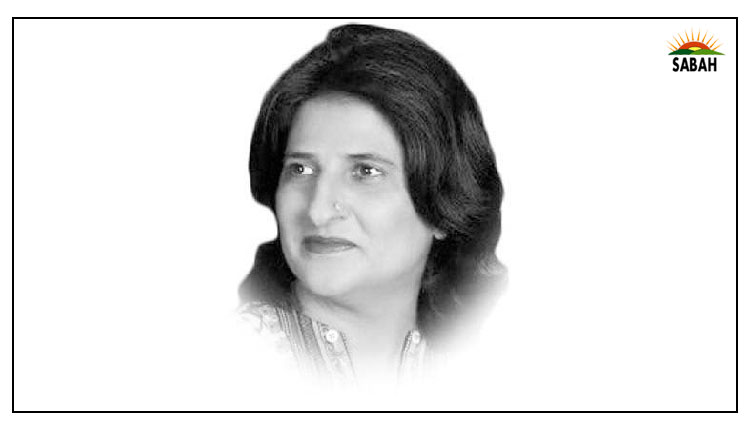The art of co-existence in a multi-nodal world …. Shazia Anwer Cheema
Professor Brantly Womack of Virginia University believes that classical international relations theory was based on a vertical structure ordered by relative power, with the hegemon, or the contest of hegemons but the proportional changes in the globalised economy of this century have created a new reality, one in which the effective pursuit of one’s national interest is more complex than compelling or submitting. Womack’s theory indicates that differences in relative power and capabilities still matter but the horizontal dimension of interaction among autonomous actors is more important than the vertical dimension of unilateral imposition. I have reasons to believe that the new dynamics of global interactions such as BRICS may be viewed through Professor Womack’s viewpoint.
BRICS Heads of State meeting is scheduled in October 2024 in Kazan, Russia. Nevertheless, Atlanticists are deliberately ignoring this event for obvious reasons. Thus not much is available on the Anglo-Saxon media about the multi-nodal world. however, western academicians are surely working extensively on this vital subject.
Two anchors of BRICS – Russia and China – are not just expending the alliance, but they have also connected themselves with Africa, South Asia and the Far East through other multilateral formations, such as SCO, the Eurasian Economic Union, ASEAN+3, SAARC (China as Observer) and African Union. The trajectory of these alliances is a non-hegemonic and non-colonial manifestation. Therefore, the framework of these alliances is economic and social integration and that too keeping the ethnic, religious and cultural identities and sensitivities fully intact.
It looks like the Global South, having multiple bilateral conflicts in its political fabric, has unanimously agreed to move forward for the shared future beyond personal grievances. The economic ties between Russia and Afghanistan, the expected rapprochement between China and India, and smoothing off relations between Iran and Türkiye can be sees as the future suffix with truth-reconciliation on the horizon. It does not mean all this is going to happen overnight, but the multi-nodal world means a world with multiple nodes all contradicting and complementing at the same time.
Pakistan, although already a member of SCO, wishes to join BRICS. When the question about the approval of Pakistan’s application was asked to the Deputy Prime Minister of Russia in Islamabad during his recent visit, he replied that Russia is looking into it but a decision has to be unanimous. I wrote on this subject in detail last year that India is sailing in two boats at the same time and extensively trying to balance its maneuvers in South and North at the same time. Due to prior experiences, emerging world powers are hesitant to take both India and Pakistan on a same platform and consider their presence at one platform as counterproductive, primarily due to India’s visceral loathsomeness for Pakistan and unprecedented self-proclamation of hegemonic ambitions. This can be a reason Russia as well as China are conscious promising Pakistan on board BRICS.
However, instead of understanding the reality of multipolarity and multiple nodes, India is still struggling to maneuver some sort of overplay which in my opinion will simmer down as the reality will emerge soon that the new economic world order has much more to offer accompanying ever-evolving challenges. So the craving for becoming a key member of the ever-expanding versatile community such as BRICS demands an adult’s behaviour. Russia, even having considerable affection for India, is not ignoring the fact that Pakistan is a much more important player in Global South and cooperation and collaboration between both countries is eminent for Euro-Asian vision.
Right before the BRICS Head of State Summit, Russia is busy connecting all the dots, may it be in Astana or at the Eurasia Economic Forum in Vladivostok, sharing a stage with Malaysia and Mongolia while inviting Cuba to Kazan next month and much more. Russia is meeting with all the potential partners not just for bilateral relations but also for keeping the bigger scenario of the futuristic Global South in mind. The visit of the Russian deputy prime minister to Pakistan is also part of a series of bi- and tri-lateral meetings to ensure that the BRICS Summit is not just BRICS-10 rather the entire Global South is on board. The new financial system, new economic facilitation, new currency modal, collective food security, and climate challenges are being discussed across the Euro-Afro-Asian partners.
It is a proven fact that the diplomatic calculus of each state is to protect its national interests. Therefore, a strategy for a post-hegemonic multi-nodal world stresses the complex ecology of action, the utility of partnerships, the encouragement of common interests, and the problems of conducting limited conflicts. These are principles of strategic far-sightedness relevant to the global matrix of asymmetric international relationships and I do not doubt that Pakistan – being an unannounced non-NATO member ally of Global North – keeps emerging realities in mind while dealing with China, India, Russia and Afghanistan.
Courtesy Express Tribune












